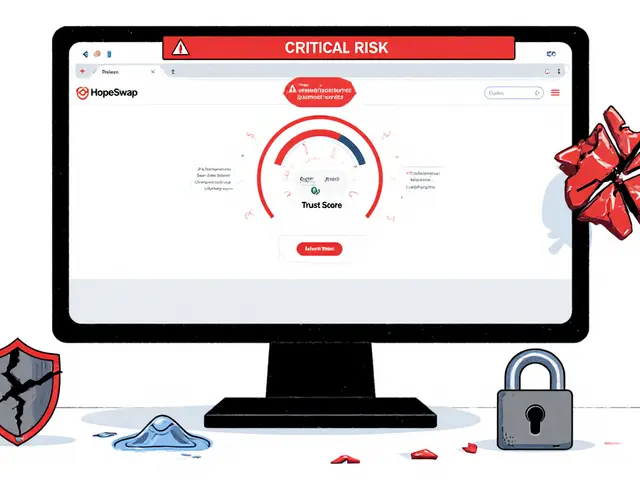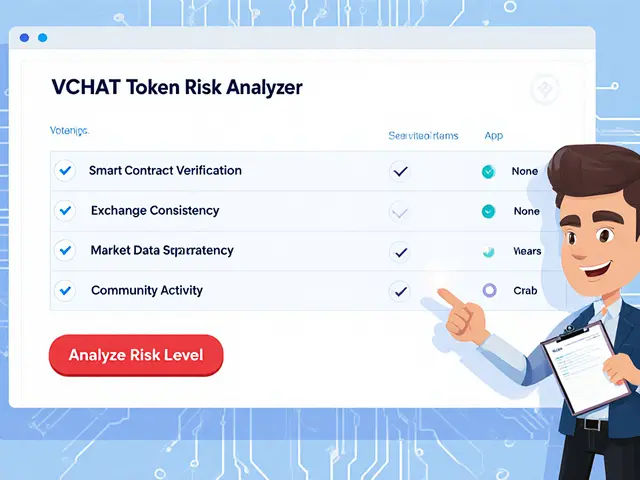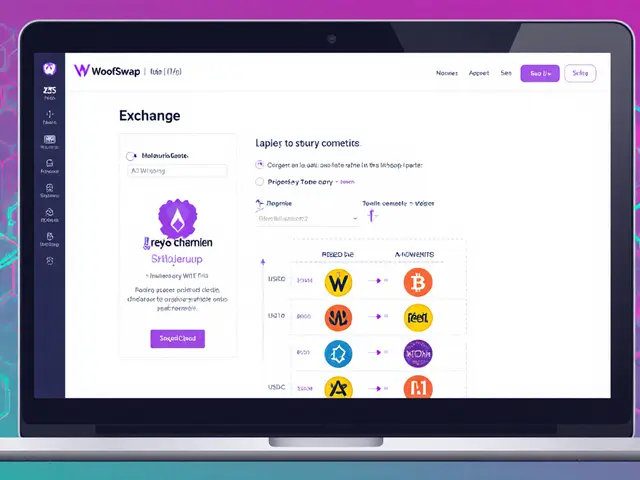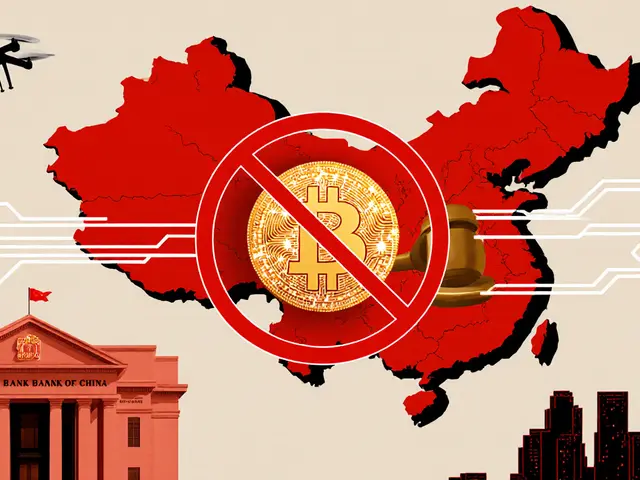- Home
- ::
- Why Cryptocurrency Has Value: Key Drivers Explained

Why Cryptocurrency Has Value: Key Drivers Explained
Cryptocurrency Value Calculator
Value Analysis Results
Scarcity Factor
-
Demand Drivers
-
Technology Value
-
Network Effects
-
When you hear people talk about the price of Bitcoin or Ethereum, the question that pops up is: cryptocurrency value-what gives these digital assets any worth at all? The answer isn’t a single magic bullet; it’s a mix of economics, technology, community enthusiasm, and even regulatory whispers. Below we break down every major driver so you can see why crypto isn’t just a meme but a genuine asset class.
TL;DR
- Crypto’s worth comes from scarcity (fixed supply) plus real demand for its utility.
- Blockchain tech provides security, transparency, and decentralization that fiat can’t match.
- Network effects-more users, developers, and apps-boost perceived value.
- Institutional adoption and clear regulation act as legitimacy boosters.
- Speculation, store‑of‑value narratives, and hedge‑against‑inflation motives drive short‑term price swings.
What Is Cryptocurrency?
Cryptocurrency is a digital asset that uses cryptographic techniques to secure transactions, control the creation of new units, and verify transfer of assets without a central authority. Think of it as money you can send directly from your phone to anyone else on the planet, with the network itself acting as the ledger.
Supply‑Side Mechanics: Scarcity by Design
Most crypto projects bake a hard cap into their code. Bitcoin has a maximum supply of 21million coins, with new blocks currently rewarding 6.25BTC to miners. This artificial scarcity mirrors gold: fewer coins mean higher price pressure when demand rises. Other tokens use inflationary models (e.g., Ethereum’s issuance rate) but balance it with utility‑driven demand to keep price stable.
Supply rules are transparent-everyone can inspect the blockchain and verify exactly how many coins exist and how fast new ones are minted. That predictability removes the surprise factor you get with central banks printing money.
Demand Drivers: Why People Want Crypto
Demand isn’t just hype; it’s rooted in several concrete factors:
- Transactional utility - cheap, near‑instant cross‑border payments.
- Smart‑contract platforms - Ethereum enables programmable money, powering decentralized finance (DeFi), NFTs, and more.
- Store‑of‑value narrative - Bitcoin marketed as “digital gold” for inflation‑averse investors.
- Speculative trading - 24/7 markets let retail and institutional traders chase gains.
- Community and network effects - the more users, the higher the liquidity and lower the volatility.
Technological Value: The Blockchain Edge
Blockchain is a distributed ledger where each block contains a batch of transactions, linked cryptographically to the previous block, forming an immutable chain. This architecture delivers three core advantages:
- Security: Cryptographic hashing and consensus mechanisms make tampering practically impossible.
- Transparency: Anyone can view the full transaction history, boosting trust without a middleman.
- Decentralization: No single entity controls the network, reducing censorship and seizure risk.
The reduction of intermediaries means transaction fees can drop to pennies, and international transfers happen in minutes rather than days.

Utility and Network Effects: From DeFi to Everyday Use
When a platform offers real‑world functionality, its token gains intrinsic demand. Ethereum’s dominance in DeFi is a prime example: over $30billion in assets are currently locked in Ethereum‑based protocols. Smart contracts are self‑executing agreements coded directly onto the blockchain, enabling trustless lending, trading, and tokenization. As developers build more dApps, users need the native token to pay gas fees, creating a feedback loop that lifts price.
Social proof matters too. Active developer communities, frequent code commits, and vibrant discussion forums signal ongoing innovation, which investors interpret as future value.
Crypto vs. Traditional Money: A Quick Comparison
| Aspect | Cryptocurrency | Fiat Currency |
|---|---|---|
| Backing | Decentralized consensus & cryptographic scarcity | Government decree & legal tender status |
| Supply Control | Pre‑programmed caps or transparent inflation rules | Central bank can print unlimited money |
| Transaction Cost | Typically pennies, varies by network load | Fees can be high for cross‑border transfers |
| Accessibility | Anyone with internet can participate 24/7 | Bank accounts may require identification, limited hours |
| Security Model | Cryptographic proof‑of‑work or proof‑of‑stake | Relies on institutional safeguards and insurance |
Speculation, Store‑of‑Value, and Hedge Functions
Beyond real utility, many investors treat crypto as an investment vehicle. Bitcoin’s capped supply fuels a “digital gold” narrative, attracting those worried about inflation eroding fiat purchasing power. The 24/7 nature of crypto markets creates constant price discovery, which can magnify short‑term swings-great for traders, risky for long‑term holders.
During periods of market stress (e.g., geopolitical tension), some funds move capital into crypto as a non‑correlated asset, hoping it’ll hold value when stocks tumble. This hedge perception adds another layer of demand, even if the correlation isn’t perfect.
Regulatory Landscape and Institutional Adoption
Regulation can either boost or crush value. Approval of Bitcoin exchange‑traded funds (ETFs) in the U.S. opened doors for retirement accounts, pushing institutional money into the market. Institutional adoption includes corporations holding crypto in treasury, banks offering custody services, and hedge funds allocating capital to digital assets. Each endorsement signals legitimacy, nudging skeptical investors toward participation.
Conversely, sudden bans or restrictive AML/KYC rules can trigger rapid sell‑offs. The price reaction to China’s mining crackdown in 2021 is a textbook example: hash power dropped dramatically, and Bitcoin’s price fell sharply before stabilizing.
Risks and Common Pitfalls
Understanding value also means recognizing what can destroy it:
- Volatility: Prices can swing 10‑20% in a single day, making budgeting tricky.
- Security breaches: If you lose your private keys, there’s no “bank” to rescue you.
- Utility gaps: Tokens without clear use cases often fade as hype dissipates.
- Regulatory shocks: New laws can freeze exchanges or ban certain activities overnight.
Mitigation strategies include diversifying across multiple blockchains, using reputable hardware wallets, and staying updated on regulatory developments.
Putting It All Together: How to Assess Crypto Value
When you evaluate a digital asset, follow this quick checklist:
- Supply model: Is there a hard cap or predictable inflation?
- Demand sources: Transaction volume, DeFi activity, institutional interest?
- Technology depth: What does the blockchain offer-speed, security, smart contracts?
- Community health: Active developers, vibrant forums, regular updates?
- Regulatory outlook: Are there clear guidelines or looming bans?
If a coin scores well in most categories, its price is likely reflecting genuine value rather than pure speculation.

Frequently Asked Questions
What makes a cryptocurrency valuable compared to a regular currency?
Value comes from three core pillars: scarcity designed into the code, real‑world demand for its utility (payments, smart contracts, store‑of‑value), and the security/transparent nature of blockchain technology that users trust without a central authority.
Why do people call Bitcoin "digital gold"?
Bitcoin’s 21million supply mirrors gold’s limited physical reserves. Investors see it as a hedge against inflation, and its price often rises when confidence in fiat currencies drops, reinforcing the gold analogy.
How does Ethereum generate demand for its token?
Ethereum powers most DeFi apps, NFTs, and decentralized autonomous organizations. To interact with these services, users need ETH to pay gas fees, creating continuous demand tied directly to network activity.
Can regulatory approval increase a cryptocurrency’s price?
Yes. When regulators clear a Bitcoin ETF or give banks permission to offer custodial services, institutional investors can enter the market legally, often pushing prices up due to the influx of new capital.
Is holding crypto riskier than holding cash?
Crypto is more volatile and lacks deposit insurance, so price swings and loss of private keys present higher risk. However, the upside potential and diversification benefits can compensate for risk‑tolerant investors.


 Finance
Finance





Write a comment